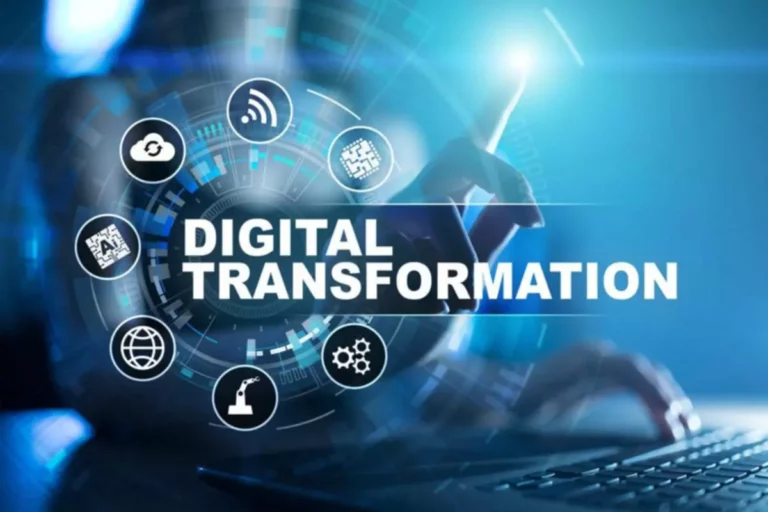5+ Key Variations Between Fog Computing Vs Cloud Computing
The integration of data is a key issue that differentiates cloud computing from fog computing. Cloud computing relies on centralized knowledge storage, with all processing and evaluation taking place at a central location. Both fog and edge computing scale to satisfy the wants of huge and complicated systems. They provide extra compute sources and services to edge units, which allows organizations to process extra knowledge in real-time. The major characteristic of fog computing is its proximity to edge gadgets. By processing knowledge nearer to the source, fog computing can scale back latency and improve system performance.

With cloud computing, a central community of storage and processing resources is used, typically comprising 1000’s and even hundreds of thousands of nodes. This distributed model presents a quantity of advantages, including reduced latency and faster information retrieval. Moreover, it could better help real-time functions that require fast access to large amounts of information.
For fog, processing and storage happen on the network’s edge, nearer to the knowledge supply, enhancing real-time control. It regulates which info ought to be despatched to the server and which could be processed locally. In this manner, fog is an intelligent gateway that offloads clouds enabling more efficient data storage, processing and evaluation.
Processing Power And Storage Capabilities
So, it’s not simple to manipulate priceless information in comparability with cloud computing with centralized data processing. Edge computing is a distributed computing framework that enables localized knowledge processing and analytics. It brings enterprise applications close to data sources similar to local edge servers or IoT devices. Fog computing relies on a distributed architecture with quite a few edge devices and fog nodes.
Cloud computing contains the supply of computing services, including information storage, servers, networking, analytics, and intelligence over the Internet. Magazine’s 5000 fastest rising companies, designs and constructs data facilities for some of the world’s largest hyperscalers and cloud suppliers on campuses across the globe. Compass embraces a long-term perspective with the monetary power of traders Ontario Teachers’ Pension Plan and Brookfield Infrastructure.
In quick, the process could be sophisticated to scale, particularly during the business enlargement phase. Cloud computing addresses these challenges by offering computing resources as scalable, on-demand services. Deploying physical servers and other technological infrastructure can take weeks and even months. Besides, companies require a physical area and a technical professional to make sure enough energy and dealing and management of the systems.
Cloud computing is a centralized model where information is stored, processed, and accessed from a remote knowledge middle, while fog computing is a decentralized model where data is processed closer to edge devices. Fog computing, generally known as fog networking, is a system for integrating and processing information that operates at the network degree somewhat than on the centralized cloud degree. This differentiates it from traditional cloud computing, which is usually centralized in a single location. To acquire a greater understanding of how fog computing and cloud computing are utilized in real-world IoT projects, let’s explore some examples.
Internet Connectivity Requirement
When we discuss fog computing vs cloud computing, there are many crucial components to consider. On the one hand, cloud computing provides unparalleled security, with highly effective encryption and data protection mechanisms to keep your data secure from unauthorized entry or manipulation. In this publish, we will explore the necessary thing variations between cloud and fog computing and clarify why fog computing and cloud computing have gotten more and more in style amongst companies. By understanding these variations, you can make an informed determination about which resolution is finest for your business. And to take care of this, companies like fog computing and cloud computing are used to rapidly manage and disseminate information to the tip of the customers. By 2020, there shall be 30 billion IoT units worldwide, and in 2025, the quantity will exceed 75 billion linked issues, according to Statista.
Lastly, fog computing supplies offline capabilities, guaranteeing uninterrupted operation even within the absence of a secure internet connection. The article introduces cloud computing, fog computing, and edge computing, explaining their variations and advantages. The convergence of these paradigms, along with the integration of AI and machine learning, is driving the development of clever edge devices capable of processing and analyzing information regionally. This shift from centralized cloud resources is paving the greatest fog computing vs cloud computing way for autonomous techniques, from self-driving automobiles to sensible factories. The way ahead for computing is thrilling, with endless prospects for extra connected and clever cities and data-driven decision-making turning into integral to our everyday lives. Fog computing is a modern method that revolutionizes the finest way we deal with and manage knowledge in today’s interconnected world.
- If real-time response and privateness are paramount, fog computing could be the better option.
- Fog computing excels in situations where low latency, enhanced privateness, and offline capabilities are crucial.
- Both fog and edge computing scale to satisfy the needs of enormous and complicated methods.
- The way ahead for computing is thrilling, with edge-cloud integration permitting seamless data sharing and processing between native units and distant cloud infrastructure.
- Edge computing, however, is perfect for applications like autonomous autos and distant monitoring, where instant knowledge evaluation at the source is essential.
It processes knowledge instantly on devices on the source, guaranteeing high operational speed and efficiency. In these cases, fog constructions will merely act as extensions of strategically situated edge data centers. In today’s digital era, the Internet of Things (IoT) has revolutionized the method in which we stay and work.
Xs Scale
Since information is processed at a local level quite than being routed through a central server, there’s much less distance for information to journey and fewer time needed for processing. As such, fog computing offers significantly faster and more responsive performance than traditional cloud computing techniques. Although these instruments are resource-constrained in comparison with cloud servers, the geological spread and decentralized nature help present reliable providers with protection over a wide area. Fog is the physical location of computing devices much closer to users than cloud servers.
Fog computing offers centralised consumer administration support, and cloud administration can either be centralised or delegated to a third get together. In contrast to cloud computing, the place useful resource administration could be spread or centralized, fog computing centralizes it. Cloud computing presents challenges in information privateness and security, as delicate data is transmitted and saved in remote knowledge facilities. Cloud suppliers typically employ security measures, such as encryption and access controls, but the information is finally entrusted to the cloud provider’s infrastructure. Among the most important variations between these two forms of computing is their working environments.

RedSwitches Is a global internet hosting supplier offering Dedicated Servers, Infrastructure As a Service, Managed Solutions & Smart Servers in 20 international areas with the most recent hardware and premium networks. These units have the potential to perform both networking and computational operations concurrently. It contains a quantity of edge nodes that assist you with a direct connection https://www.globalcloudteam.com/ with any bodily hardware. IoT development and cloud computing are among the many core competencies of SaM Solutions. Our extremely certified specialists have vast expertise in IT consulting and custom software program development. Companies should examine cloud vs. fog computing to take benefit of the emerging alternatives and harness the true potential of the applied sciences.
Superior Ideas Of Cloud
Fog can also embrace cloudlets — small-scale and rather powerful knowledge centers positioned at the edge of the community. Their purpose is to support resource-intensive IoT apps that require low latency. They depend on a network of sensors and devices situated all through a metropolis to gather data and make decisions about the way to optimize city services and infrastructure.
Fog computing, cloud computing, and edge computing applied sciences have irreplaceable options to many IoT challenges. The term “Edge Computing” refers again to the processing as an appropriated worldview. It brings information about information and registers energy nearer to the gadget or info supply the place it is generally required. Edge Computing is linked to coping with persistent information near the data supply, which is taken into account the ‘edge’ of the affiliation.
It doesn’t replace cloud computing but enhances it by getting as close as possible to the source of data. In cloud networks, data travels to the server from one user’s gadget and again right down to the others. With cloud computing, customers don’t have to own any technologies they use for their work, whether or not software program or hardware.
Cloud Computing
For this reason, in terms of safety concerns, the comparability between fog computing and cloud computing ultimately is dependent upon your specific wants and context. Most people don’t understand the difference between fog computing vs. cloud computing. Cloud computing is the on-demand provision of laptop processing energy, knowledge storage, and functions obtainable over the web. Fog computing is used in Internet of Things (IoT) functions to process knowledge the place it’s generated quite than in a centralized information center or cloud. By bringing processing and storage closer to the edge of the community, fog computing can enhance performance and reduce latency for IoT functions.
This permits customers to entry knowledge extra rapidly and successfully by way of centralized hubs whereas additionally minimizing the chance of latency or connection points which may arise with cloud-based methods. Because cloud servers are hosted off-site in dedicated data facilities, they’ll shortly reply to consumer demand by tapping into extra assets and scaling up to meet elevated wants. In distinction, fog computing depends on native hardware, which may be slower to respond due to factors corresponding to latency and restricted bandwidth. There is one other strategy to knowledge processing much like fog computing — edge computing.